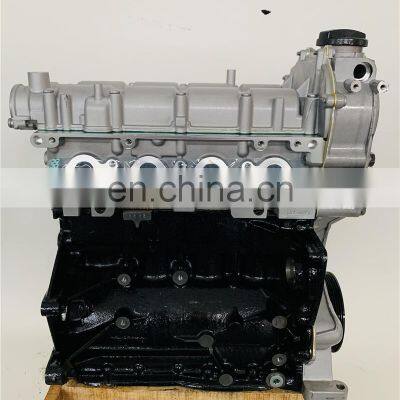Install a state-of-the-art clp engine for better performance.
Install a state-of-the-art clp engine for better performance.
Blog Article
Just How a Clp Engine Can Enhance Efficiency in Numerous Industries
The introduction of CLP engines marks a substantial shift in functional performance across various sectors, driven by their capacity to enhance fuel usage and reduce downtime. As companies progressively prioritize sustainability alongside efficiency, the duty of CLP engines becomes even a lot more essential.
Summary of CLP Engines
CLP engines, or Constant Fluid Propellant engines, stand for a substantial development in propulsion technology, particularly for space applications. These engines utilize a continual feed system that enables for the continual expulsion of propellant, leading to improved effectiveness and performance compared to standard strong or hybrid propulsion systems. By preserving a constant circulation of fluid propellant, CLP engines can achieve extra accurate drive control, which is critical for maneuvering spacecraft in various goal situations.
The layout of CLP engines incorporates sophisticated materials and innovative fuel administration systems. clp engine. This leads to reduced weight and enhanced reliability, necessary factors for long-duration area missions. The continuous procedure minimizes the danger of combustion instability, an usual challenge in conventional rocket engines.

Benefits in Production
The manufacturing of Constant Fluid Propellant (CLP) engines provides several significant benefits that boost both effectiveness and cost-effectiveness. One of the key benefits is the streamlined production procedure, which lowers the intricacy related to conventional propulsion systems. By using fluid propellant, manufacturers can achieve higher precision in engine performance, leading to maximized energy output and decreased waste.
Furthermore, CLP engines facilitate a greater level of modularity, allowing for easier assimilation right into different manufacturing lines. This adaptability can substantially decrease lead times and boost total operational versatility. Using CLP modern technology additionally often tends to reduce the need for comprehensive maintenance because of less relocating parts, which converts right into decreased downtime and operational costs.

Applications in Logistics
Leveraging Continuous Fluid Propellant (CLP) engines in logistics supplies substantial advantages in operational effectiveness and reliability. These engines provide a durable service for different transport demands, allowing the seamless activity of products throughout huge distances. The intrinsic layout of CLP engines enables for constant power output, which translates right into smoother and much more predictable transportation routines.
Among the crucial applications of CLP engines in logistics remains in heavy-duty products transport, where they can drive both ground and airborne cars. Their capacity to keep high performance under varying tons conditions ensures that delivery timelines are satisfied, thus enhancing client fulfillment. In addition, CLP engines can be incorporated into automated logistics systems, assisting in real-time tracking and enhancing route planning.
Furthermore, the durability of CLP engines reduces upkeep downtime, enabling logistics firms to maximize their functional capabilities. This is particularly beneficial in warehousing procedures, where effectiveness in dealing with and transporting goods is critical. As logistics proceeds to progress, the assimilation of CLP engines stands for a forward-thinking method that not just boosts performance but also supports the sector's expanding needs for integrity and rate.
Effect On Energy Performance
How do Constant Fluid Propellant (CLP) engines enhance energy performance in transportation? CLP engines use a regular flow of liquid gas, optimizing combustion procedures and keeping a stable thrust result. This layout reduces energy losses related to link traditional combustion engines, where gas distribution can vary and cause inadequacies.
The continuous operation of CLP engines useful reference enables for an extra efficient thermal cycle, leading to greater specific impulse compared to traditional engines. clp engine. This converts to reduced fuel usage for the very same amount of work done, dramatically lowering operational expenses throughout various transport fields, including air travel and maritime sectors
Moreover, the ability of CLP engines to preserve ideal efficiency under varying tons problems reduces the requirement for constant velocity and slowdown, even more improving gas efficiency. Enhanced power efficiency not only contributes to cost savings however likewise causes reduce greenhouse gas discharges, straightening with worldwide sustainability goals.
Future Trends and Innovations
Emerging developments in Continuous Liquid Propellant (CLP) engine modern technology pledge to transform the landscape of transport performance and sustainability. As sectors pivot toward greener alternatives, CLP engines stand at the center, incorporating ingenious materials and layout methods that improve performance while decreasing ecological effect.
One of one of the most appealing trends is the fostering of crossbreed systems that combine CLP engines with eco-friendly power sources. This harmony can enhance fuel intake and minimize emissions, aligning with international sustainability objectives. Furthermore, advancements in computational liquid dynamics (CFD) are facilitating the layout of more aerodynamically reliable engines, resulting in reduced drag and enhanced fuel effectiveness.
Furthermore, the advancement of smart surveillance systems is readied to boost functional efficiencies. These systems leverage data analytics and IoT innovation to optimize engine performance in real-time, making sure that the engines operate within their most efficient parameters.
As research study remains to explore alternate propellant solutions-- such as biofuels and synthetic fuels-- the future of CLP engines looks appealing. By using these developments, markets can not just improve their efficiency however additionally add considerably to a cleaner, a lot more lasting future in transport.
Conclusion
Finally, CLP engines stand for a considerable improvement in performance across several sectors. Their ability to optimize fuel usage and lower operational costs, integrated with a continual feed system, improves power result and functional reliability. The integration of advanced materials and fewer moving components decreases maintenance demands, while positioning with sustainability goals placements CLP engines as a crucial technology for the future. Continued innovation in this field promises further enhancements in effectiveness and environmental performance.
Report this page